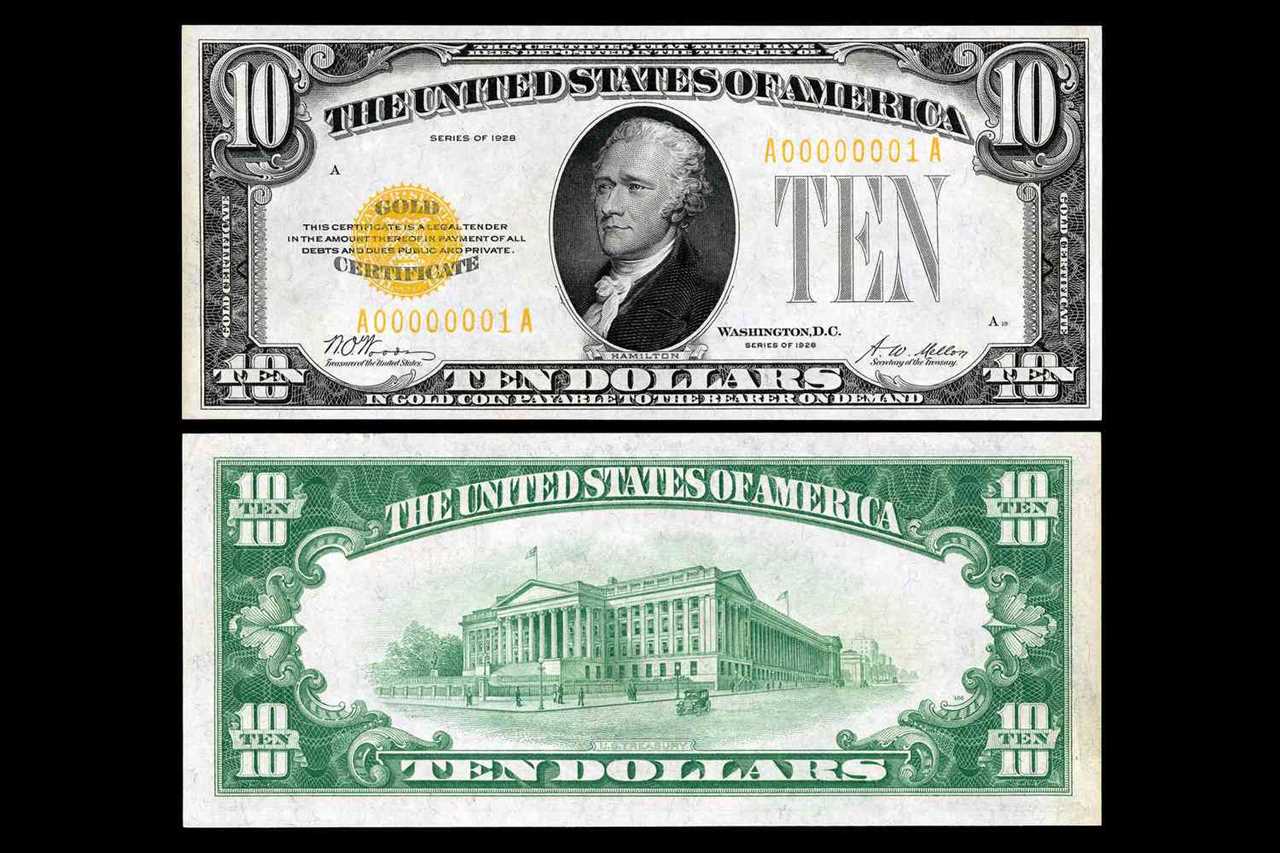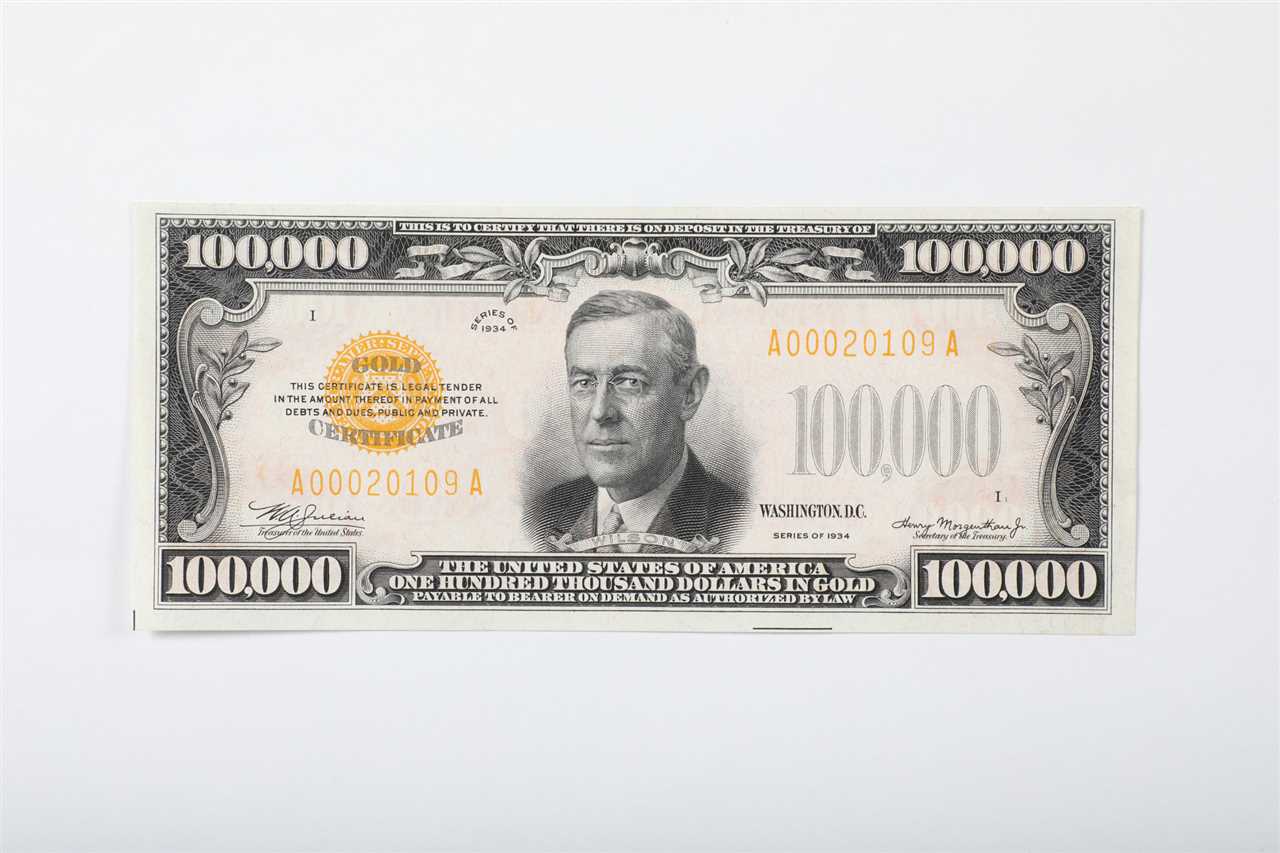Gold Certificate Meaning

A gold certificate is a document issued by a government or a financial institution that represents ownership of a certain amount of gold. It serves as proof that the holder has a claim on the specified amount of gold, which is typically held in a secure vault.
Ownership and Transferability
Gold certificates are commonly used as a form of investment or as a means of storing wealth. They provide individuals with a convenient way to own gold without the need for physical possession. Instead of holding physical gold, investors can hold gold certificates, which can be easily bought, sold, and transferred.
Security and Authenticity
Gold certificates are designed to ensure the security and authenticity of the gold they represent. They often include various security features, such as holograms, watermarks, and unique serial numbers, to prevent counterfeiting and unauthorized duplication.
Redemption and Conversion
In some cases, gold certificates can be redeemed for physical gold. This means that the holder can exchange the certificate for the equivalent amount of gold, either in the form of bullion or coins. Additionally, some gold certificates may offer the option to convert the gold into other forms of currency or assets.
Regulation and Oversight
The issuance and trading of gold certificates are subject to regulation and oversight by government authorities and financial institutions. This ensures that the certificates are backed by legitimate reserves of gold and that they adhere to established standards and guidelines.
Overview of Gold Certificates

Gold certificates are financial instruments that represent ownership of a certain amount of gold. They were first introduced in the late 19th century as a way to facilitate gold transactions and provide a convenient form of ownership for individuals and institutions. Gold certificates were widely used during the gold standard era when currencies were backed by gold reserves.
These certificates were issued by banks and other financial institutions and were backed by physical gold held in their vaults. The certificates were typically issued in various denominations, allowing individuals to own a fraction of an ounce or a larger amount of gold.
How Gold Certificates Work
Gold certificates can be transferred between individuals or used as collateral for loans. They provide a convenient way to own gold without the need for physical possession or storage. The value of the certificate is directly linked to the price of gold, and holders can choose to redeem their certificates for physical gold if desired.
Advantages of Gold Certificates
Gold certificates offer several advantages for investors and individuals interested in owning gold:
- Convenience: Gold certificates provide a convenient way to own gold without the need for storage or security concerns associated with physical gold.
- Liquidity: Gold certificates can be easily bought and sold, making them a liquid investment that can be converted into cash when needed.
- Diversification: Owning gold certificates allows investors to diversify their portfolio and hedge against inflation or economic uncertainties.
- Accessibility: Gold certificates are accessible to a wide range of investors, including individuals and institutions, offering a flexible investment option.
Overall, gold certificates provide a convenient and accessible way to own gold, allowing individuals and institutions to benefit from the value and stability of this precious metal.
History of Gold Certificates
Gold certificates have a long and fascinating history that dates back to the 17th century. These certificates were originally introduced as a way to facilitate trade and commerce, providing a secure and convenient method of transferring ownership of gold without the need for physical transfer.
The first gold certificates were issued by the Bank of England in the late 17th century. These certificates represented a specific amount of gold held by the bank and could be redeemed for physical gold upon request. This system proved to be highly successful and was soon adopted by other countries and central banks around the world.
During the 19th and early 20th centuries, gold certificates became increasingly popular as a form of currency. They were widely used in international trade and were considered to be a reliable and stable form of money. In the United States, gold certificates were issued by the Treasury Department and were backed by gold held in the country’s reserves.
However, the use of gold certificates as a form of currency began to decline in the mid-20th century. With the advent of electronic banking and the increasing use of fiat currencies, the need for physical gold-backed certificates diminished. Many countries, including the United States, abandoned the gold standard and ceased issuing gold certificates.
Today, gold certificates are primarily used as a form of investment. They allow individuals to own gold without the need for physical storage and provide a convenient way to buy, sell, and trade gold. Gold certificates are typically issued by reputable financial institutions and are backed by physical gold held in secure vaults.
| Year | Event |
|---|---|
| Late 17th century | Bank of England issues the first gold certificates |
| 19th and early 20th centuries | Gold certificates become popular as a form of currency |
| Mid-20th century | Decline in the use of gold certificates as fiat currencies become more prevalent |
| Present day | Gold certificates primarily used as an investment vehicle |
Gold Certificate and [GOLD catname]
![Gold Certificate and [GOLD catname]](/wp-content/uploads/2024/01/gold-certificate-meaning-overview-history-1k26q1zu.jpg)
Gold certificates were widely used in the 19th and early 20th centuries when gold was a common form of currency. They were often issued by banks or governments and were considered to be a secure and convenient way to hold and transfer gold.
The use of gold certificates declined with the advent of fiat currency, which is not backed by a physical commodity like gold. However, they still hold historical and collectible value. Many collectors and investors are interested in acquiring gold certificates as a way to own a piece of history and to diversify their investment portfolios.
Gold certificates can vary in their design and appearance, depending on the issuer and the time period in which they were issued. Some certificates feature intricate engravings and designs, while others are more simple and utilitarian. The value of a gold certificate is typically based on the weight and purity of the gold it represents, as well as its rarity and condition.
Today, gold certificates are primarily sought after by collectors and investors who are interested in the history of currency and the gold market. They can be purchased through reputable dealers and auction houses, and their value can fluctuate based on market demand and the overall price of gold.

Emily Bibb simplifies finance through bestselling books and articles, bridging complex concepts for everyday understanding. Engaging audiences via social media, she shares insights for financial success. Active in seminars and philanthropy, Bibb aims to create a more financially informed society, driven by her passion for empowering others.
